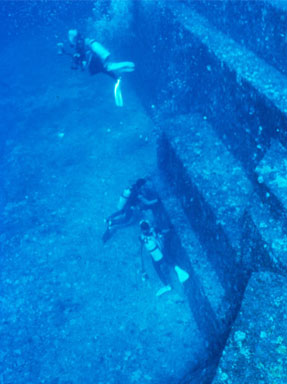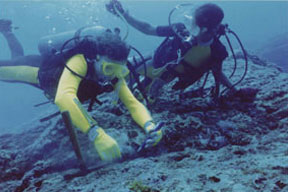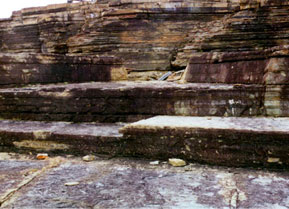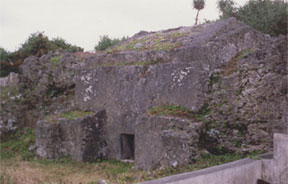
The Underwater Monument at Yonaguni, Japan
Yonaguni is a little island located in the far southern portion of Japan. Submerged off the coast of Yonaguni are a series of mysterious structures that appear to be giant steps carved out of the bedrock. Indeed, viewing photographs, or even diving the site and superficially inspecting the monument, it looks like we have here the side of a step pyramid, but a step pyramid covered by the ocean. How can this be? One suggestion is that in fact this is a step pyramid, and it was originally built on land a very, very long time ago. It is known that sea levels have risen substantially, by a hundred meters or more, since the end of the last glacial period about 12,000 years ago. Could the Yonaguni Monument be a remnant of a pre-glacial civilization that was inundated with the rising sea levels? Does Yonaguni represent the physical remains of the legendary lost continent of Mu (sometimes referred to as Lemuria, essentially the Pacific equivalent of the lost continent of Atlantis)?
If we have the remains of a very ancient human-made structure off the coast of Yonaguni, one dating back to around 10,000 or 8000 BCE this would be of great interest, and of great interest to me in particular. After all, I have concluded that the Great Sphinx of Egypt dates back to a very remote period (to before the end of the last ice age, circa 9700 BCE). Early in my research of the Yonaguni structure, I felt I would dearly love to find other evidence of sophisticated culture, advanced civilization, and monumental stonework at this early period (such evidence has since been found in southeastern Turkey, at the site of Göbekli Tepe). With this in mind, I visited Yonaguni on several occasions and made dozens of dives on the site (that is me with the wetsuit with yellow arms in the second photograph, using a hammer and chisel to collect underwater rock samples at Yonaguni).

As difficult as it may be for some to accept, after carefully studying the Yonaguni Monument I have to report that I do not believe it is an artificial, human-made structure. It is indeed an absolutely incredible structure, and well worth seeing, but I must conclude that, based on all of the evidence, it is primarily a natural structure. The rocks of the region break out neatly, both along horizontal and vertical planes, and naturally form the step-like appearance. This is seen both underwater and on the surface of Yonaguni.
However, if I simply state that the Yonaguni Monument is natural, I leave out part of the story. On the island is evidence of very ancient human habitation, including tombs and other structures artificially carved from the bedrock (see the accompanying photo) that I am convinced mimic, and were stylistically inspired by, the natural features of the island, including the step-like features now submerged by the ocean. Indeed, I believe that even though the Yonaguni Monument may be primarily natural (say, over 95% natural), parts may have been "touched up" by ancient humans and the ancient inhabitants of the island may have both admired and utilized the Yonaguni Monument. Analogously, we can consider the famous prehistoric cave paintings of Europe. The caves themselves are natural (although in a few places perhaps artificially enlarged), but the caves were utilized by ancient humans and the paintings on their walls and ceilings are artificial productions by early humans. Although, disappointingly, the Yonaguni Monument is natural, the island itself attests to habitation by an early human population.

For a superb and relatively recent documentary (45 minutes) about the Yonaguni monument in which I appear, go to www.youtube.com/watch?v=7MKh2H9Aaxk. Hosted by the SCUBA expert Monty Halls, the program is titled, Monty Halls and Japan's Lost Atlantis. Originally produced for his dive series on the UK's Channel 5, it presents both sides of the argument without sacrificing drama.

